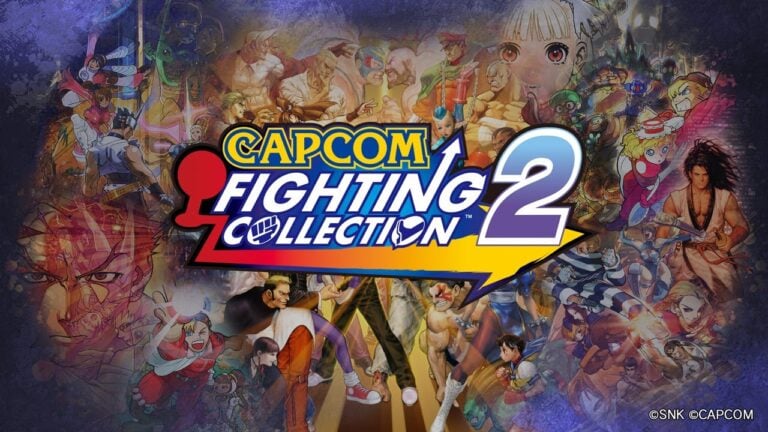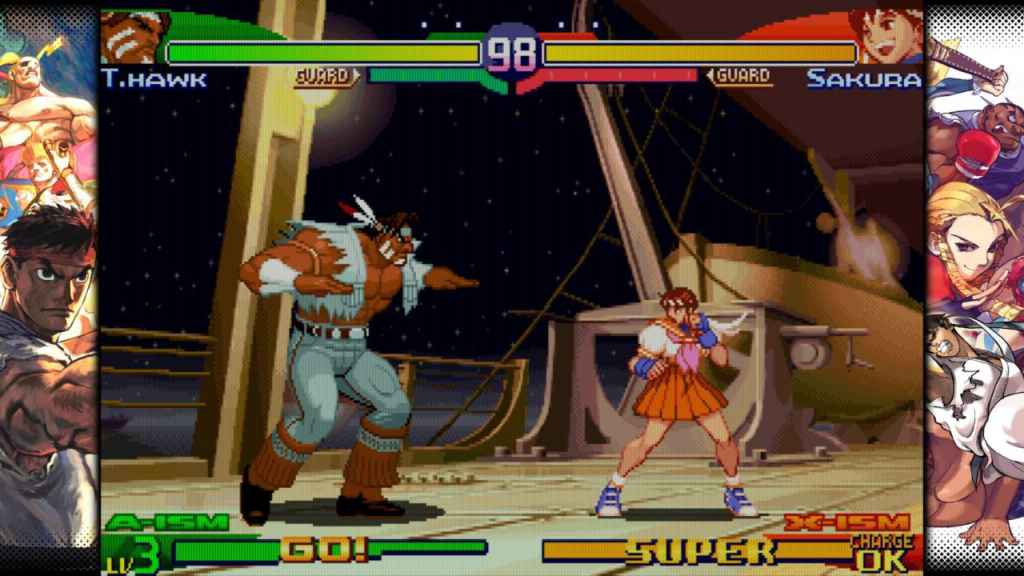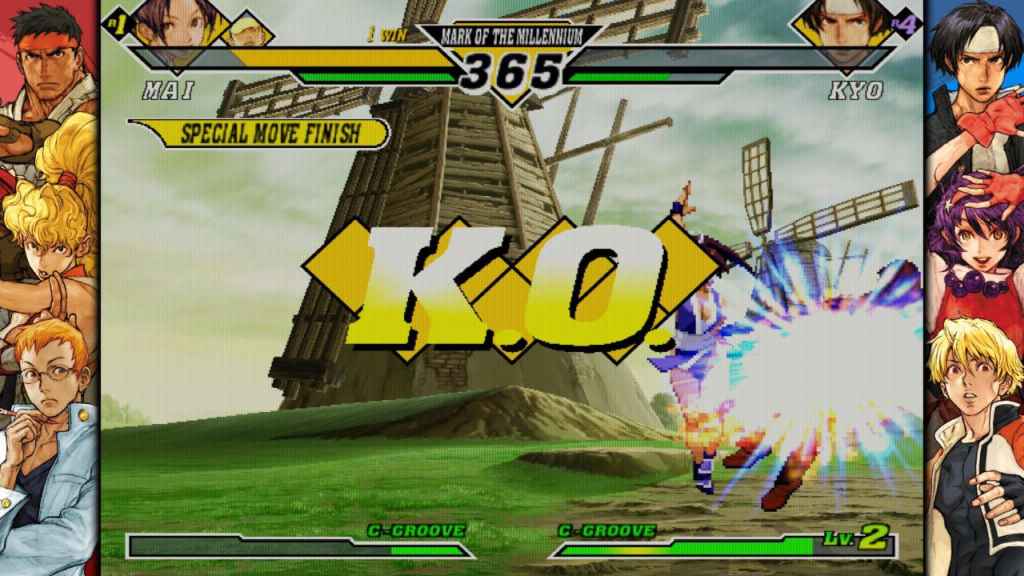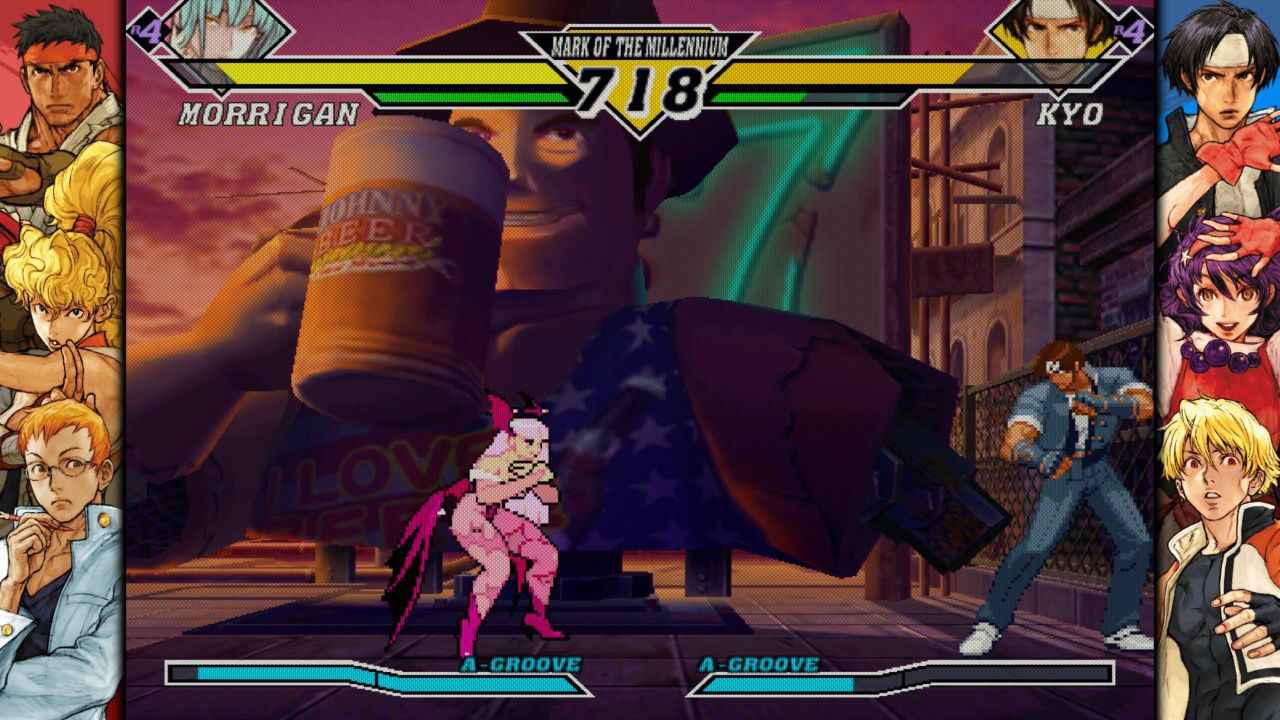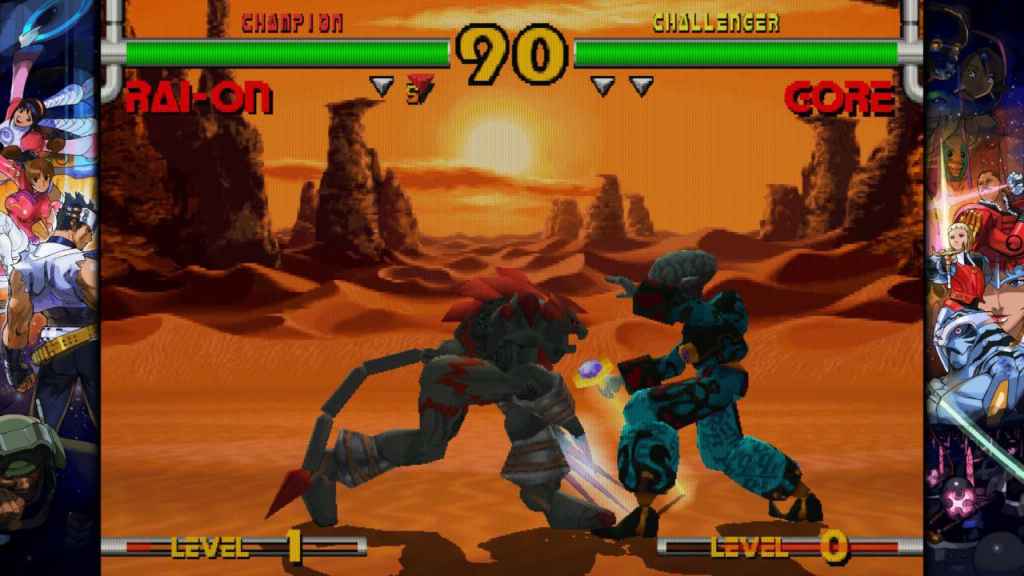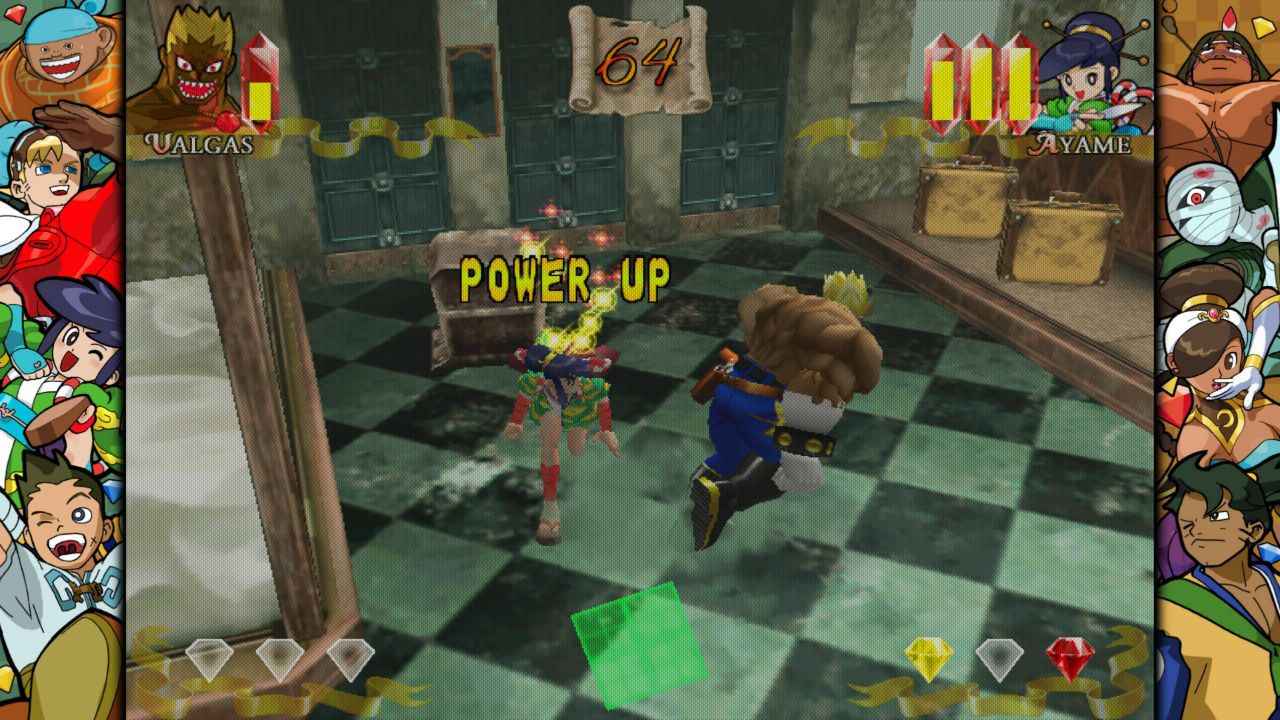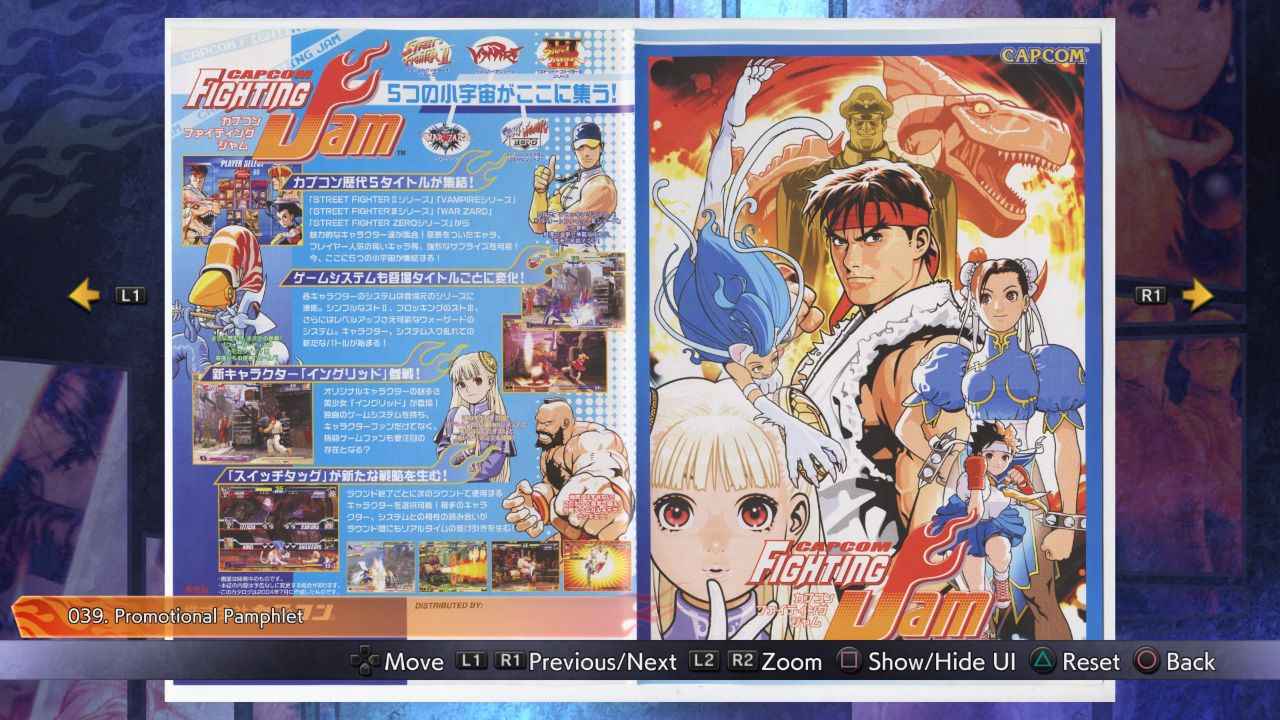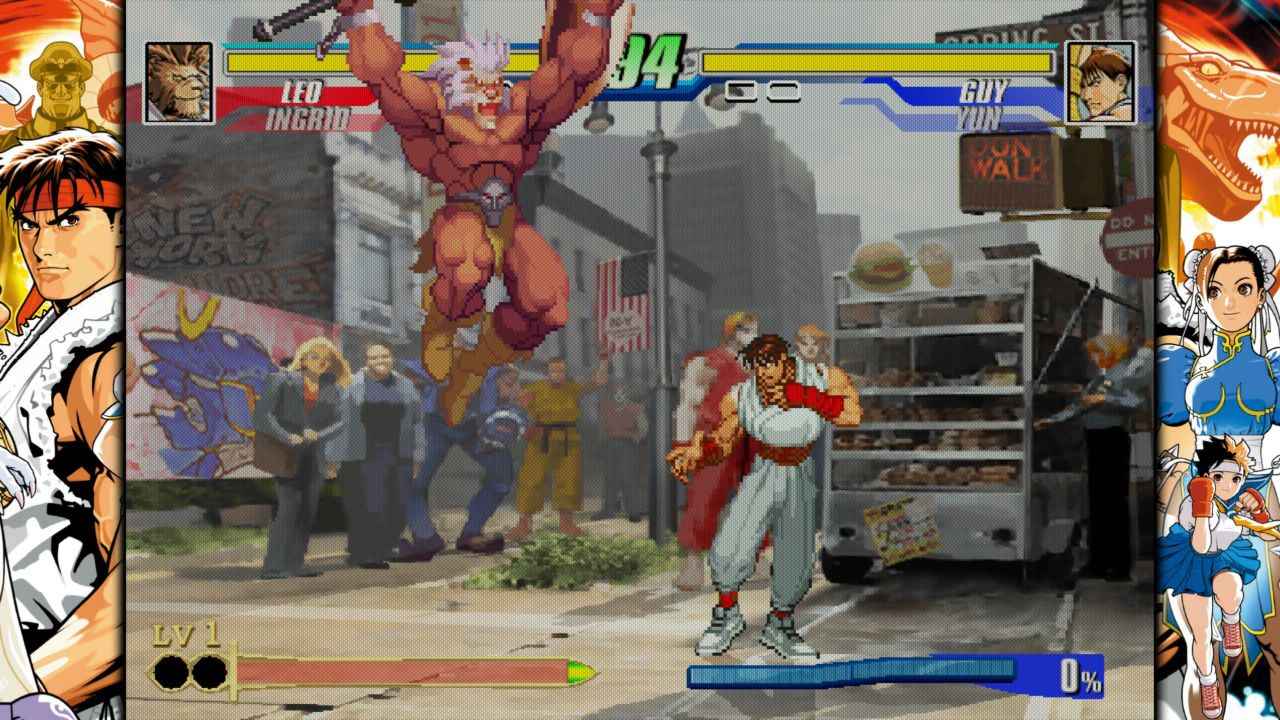Capcom Fighting Collection 2 PS5 Review. More than other developers in the fighting game space, it feels like Capcom is interested in introducing newer players to the legacy of their franchises. Off of the back of Street Fighter 6, collections of older fighting games offer windows to experience where modern titles cut their teeth and defined their identities.
This much has been true for every collection that Capcom has released thus far, but Capcom Fighting Collection 2 has a certain niche element that makes it feel that much more noteworthy in my mind; this element being the collaboration between SNK and Capcom.
This set of eight games is a wonderful time capsule that features the high quality that we’ve come to expect out of the publisher, as well as the same bonuses that add value for enthusiasts.
Capcom Fighting Collection 2 Review (PS5) – Squaring Up Once Again
A Stunning Selection That Goes Deep
Across the board, Capcom Fighting Collection 2 manages to flawlessly remaster all eight of the games here and brings each of their visuals into brilliant clarity. I always get anxious about the use of smoothing filters when “remastering” games that use pixel styles, but those fears have been put to bed. Each game looks as you remember, just clearer and with higher resolution.
Ultimately, the main thing is that each one looks as good as they always have, these aren’t the type of game where fidelity is really anything to worry about. Performance comes first and that’s something that Capcom have nailed. The same goes for online reliability, which is still just as good as it was with previous entries. (Warts and all, with some strange UI choices making for a bit of an obstacle here and there.)
The main draw of this particular set of the game is prominently the return of the classic Capcom VS. SNK titles that had been previously lost on older hardware. Not dissimilar to the miraculous return of the Marvel games earlier last year, these crossovers are often lost due to licensing issues and oddities surrounding publishing.
With Terry and Mai being headliners in the second season of Street Fighter 6, and the release of Capcom Vs. SNK SvC Chaos last year, it’s clear that both of them are on pretty friendly terms, so the return of these games felt more like an inevitability than a pipe dream.
Naturally, that’s where a lot of attention is going to be directed when people pick these games up. Both Capcom Vs. SNK: Millennium Fight 2000 Pro and Capcom Vs. SNK 2: Mark of the Millennium 2001 feature the iconic casts of both companies crossing over in combat and adapting to a more uniform playstyle. Both games feature the “groove” system, that let you tailor your approach to combat depending on the type of playstyle you favour.
In Milennium Fight 2000 Pro, this is shown in the Capcom or SNK groove, that dictates the way your special gauge behaves. In Mark of the Milennium 2001, these two ‘grooves’ have been expanded to include more options.
Player expression is an important part of these games, which is understandable given the frankly overwhelming size of the roster. The ratio method of selecting characters means that you can choose from 1 to 3 characters for a single match, that act as “stocks” essentially. (This goes up to potentially four characters in Millennium Fight Pro 2000!).
The trade-off is making each individual character weaker to compensate for having more options. This creates an interesting balance, where you might like to have fewer characters with higher damage output, as opposed to more options.
Back to the Roots
Outside of the obvious crossovers between companies, this collection also features Capcom Fighting Evolution, considered a somewhat divisive mash-up of Capcom’s other fighting games.
Each character in Capcom Fighting Evolution very much borrows from the game they originally featured in, leading to some ‘interesting’ balance that was heavily critiqued at the time it originally launched. There isn’t much synergy across the cast of characters here and I found myself feeling like it was slightly unfocused as a result.
One of the more ‘classic’ entries in this collection is Street Fighter Alpha 3 Upper, the final entry in the Alpha sub-series of Street Fighter that is a quiet favourite among fans. This version of Street Fighter introduces the “-ism” mechanic that influenced the “grooves” in Capcom Vs. SNK and still stands as a formidable entry in the series for many.
Unlike Capcom Fighting Evolution, this entry feels far more well-rounded and developed as a fighting game. In a collection of so many games, it’s quite easy to overlook a few rough edges, especially when committing to keeping the games so close to their original.
Embracing the Strange
It’s easy to look at Capcom’s history in the fighting game space and think that it mostly exists around Street Fighter and the occasional entry for Darkstalkers or a crossover. That’s where the second half of this collection weighs in and demonstrates that the definition of “fighting game” is far more broad than you would first expect.
Despite being included in this collection and under the “fighting game” label, I would really hesitate to call Power Stone and Power Stone 2 fighting games in the traditional sense. They’re fabulous party games, with a far more approachable playstyle when compared to others in this set; but they aren’t about intricate combos.
That isn’t a critique; I think having a game geared towards a more casual audience in a collection aimed at veterans makes the entire package that bit more attractive. Power Stone and Power Stone 2 more than justify the price of admission, and only add to the overall package.
Plasma Sword: Nightmare of Bilstein and Project Justice round out the set of 8 to include two “3D” fighting games that feel closer to what you might expect out of a Street Fighter game on an axis. They’re fascinating curios that will no doubt please someone out there, beautifully emulated to the same standard as the “flagship” games.
Pitch Perfect Presentation (At a Cost)
As with their other compilation titles, the menus that tie each game together are bombastic and full of personality. Specifically composed music makes this set feel like a big achievement and makes you feel like you’re playing something special, rather than just a collection of ROMs.
This is helped by the inclusion of a smorgasbord of supplementary materials for each game, with concept art, high-quality renders and all kinds of curios to go through for your favourites. These types of inclusions are always a cheap and cheerful way to bulk out the experience, but I enjoy them nonetheless. Getting to glimpse even slightly behind the curtain with these classic games is a privilege.
This goes down to the marquee cards from the original arcade machines; this dedication to detail is something to be applauded. My one issue with this focus on preserving the old, is that I feel that the onboarding experience has been somewhat compromised.
This is an issue that runs inherently to how these games were originally designed; word of mouth was how most people enjoyed games in the arcade. It was an era where online resources were a rarity, if available at all.
I found myself consulting more than a few guides online in my pursuit to understand even the fundamental mechanics of most of these games, which I feel like could have been included in a manual written for each game.
This is ultimately a very small (and admittedly personal) nitpick that I feel like could have been addressed in a rerelease; online communities will always be the lifeblood of the fighting game community and that isn’t ever going to change. The inclusion of dedicated training modes for each game is a step in the right direction and yet I wish we had just that little bit extra.
At the same time, I would love to see more effort being put into allowing players to enjoy mechanics with official explanations; we see extensive tutorials in modern fighting games, why do older games not get the same benefit when they get rereleased?
